
【Editor’s Note】 At the beginning of 2020, an unexpected pandemic pressed the “pause button” on our economy, plunging companies into a turbulent and uncertain environment. In this war against the virus without gunfire, complaining about the environment or unfair fate is not the approach of excellent companies; timely adjustments and actively seeking transformation paths are the hard truths. With changes in the business environment, the trend of “online” in various sectors of society has become increasingly evident, making digital strategy an essential issue that companies must consider. So, how has the COVID-19 pandemic impacted the practice of corporate digital transformation? How should companies better utilize digital transformation as a “silver bullet” to turn crises into opportunities in the post-pandemic era? Let’s explore the latest research findings from Professor Deng Xinming’s team at Wuhan University.

1. Digital Strategy: A Silver Bullet in the Post-Pandemic Era
The COVID-19 pandemic has hit hard, causing a halt in corporate production and operations, while also prompting companies to seriously consider strategic transformation to adapt to the macro and micro environments after the pandemic, allowing them to respond calmly to future environmental changes.
It is noteworthy that the greatest impact of this pandemic on ordinary people’s lives is the forced “lockdown”; people cannot go out shopping, traveling, or even going to work or on business trips. In this context, “online” has become the best mode of operation for various activities, with online office work, online classes, online shopping, and online concerts emerging in people’s daily lives like mushrooms after rain.

In the field of strategic transformation research, there is a “silver bullet” theory that emphasizes the use of a specific key method by companies to adjust their work methods or market actions. These key methods are referred to as “silver bullets,” akin to the crucial “silver bullet” in a company’s overall “handgun”.
Before the pandemic, digitalization was merely an additional task for companies. However, after the pandemic, stakeholders such as executives, employees, and consumers were all “stuck” at home, prompting companies to start considering questions like: “What measures should I take to maintain normal operations?” and “How can I meet the consumption needs of consumers at home?”…
The answers to these questions all pointed towards digital transformation. It must be said that digital transformation is a “silver bullet” that companies need to grasp firmly in the post-pandemic era.
2. The Development History of Digital Transformation
The industrial revolution and the technological revolution have undoubtedly been the most powerful “boosters” in the development of human civilization. In the 1860s, the steam engine emerged during the first industrial revolution, ushering humanity into the “steam age,” replacing handcraft factories with factories, and manual labor with machines, greatly enriching human material wealth. The advent of steamships and steam trains further connected the world closely.
In the 1870s, the second industrial revolution brought humanity into the “electric age,” significantly enhancing factory production capacity, changing people’s production and lifestyle, expanding the scope of human life, and strengthening communication between people, further deepening globalization.
In the 1940s and 1950s, computer technology shone during the wave of the third technological revolution. After more than 70 years of evolution and development, it has undergone various forms such as single-board computers, local area network computers, PC internet, and mobile internet, and today has developed into diverse digital technologies.
In recent years, with the advent of the fourth industrial revolution, new concepts and technologies such as artificial intelligence, 5G, the Internet of Things, and blockchain have emerged one after another, providing numerous high-quality feasible options for corporate digital transformation.

Digitalization is a significant driving force in the economic and social development of humanity, and it is crucial for the entire economy. A recent survey by Accenture showed that at the end of the 20th century, the creation of economic value by enterprises mainly came from hardware. As we entered the 21st century, digital technologies began to emerge, and around 2010, digital technologies accounted for 10% of the sources of enterprise value creation. Accenture predicts that in the future, the contribution of digital technologies to enterprise value creation is likely to soar to 70%.
It can be seen that digitalization is a crucial “silver bullet” for the survival and development of modern enterprises. Digital transformation is an inevitable path for enterprise development, and digital innovation is the direction of joint efforts for the global economy. The challenges brought by this pandemic should not only be seen as perilous challenges but also as opportunities that need to be seized. Enterprises should take this as an opportunity to keep pace with the digital wave and let digitalization permeate all aspects of their operations.
3. Main Content of Digital Transformation
The digital transformation of enterprises mainly involves optimizing and improving various process operations in the value chain based on digital technologies. As shown in Figure 1, the digital technologies of the new era, represented by artificial intelligence (A), blockchain (B), cloud computing (C), and big data (D) technologies (collectively referred to as ABCD technologies), support the adjustment and upgrading of various processes such as sales, production, logistics, research and development, finance, and human resources.

Figure 1 Main Content of Corporate Digital Transformation
Furthermore, the specific content of digital transformation in various processes also differs: In the sales process, companies can utilize e-commerce and CRM systems (i.e., customer relationship management systems) to achieve digitalization of sales and after-sales work;
In the production process, the digitalization solutions that companies can adopt include personalized production, using AI for product modeling, etc. Additionally, companies can integrate the front-end and back-end of production into a unified data platform, making the production process more flexible and intelligent, achieving “flexible production”;

In the logistics process, companies can use cloud computing and the Internet of Things to scientifically arrange logistics activities and improve supply chain visibility, creating “smart logistics”;
In the research and development process, the role of digitalization is even more significant. Companies should first make full use of ABCD technologies in their R&D activities, and secondly, consider involving users in product development to enhance the social interactivity of R&D activities;
Digitalization in the finance and human resources processes is relatively easier and more standardized. The former can be achieved by introducing financial systems such as Kingdee, while the latter mainly involves digitizing personnel files for electronic archiving.
After the outbreak of the pandemic, the trend of “online” in various sectors of society has become increasingly evident. Companies should fully seize the opportunity to implement comprehensive digital transformation based on digital technologies represented by ABCD, assisting in the healthy and long-term development of enterprises in the future, allowing this “silver bullet” of digitalization to play its role. It can be said that deeply cultivating online and digitalization may be a strategic task that many private enterprises will need to firmly implement in 2020.
4. Corporate Digital Transformation During the Pandemic
How has the COVID-19 pandemic impacted the practice of corporate digital transformation? To understand this issue, the author distributed questionnaires to 581 companies from March 20 to 23, 2020, investigating their willingness and content for transformation. The survey results are as follows:
First, we examined the willingness of companies to undergo digital transformation after experiencing this pandemic. The survey results showed (as shown in Figure 2) that 392 companies (accounting for 67.47% of the total) believed that digital transformation is an urgent task; 94 companies (16.18%) were uncertain about whether they needed to undergo digital transformation; and 95 companies (16.35%) believed that digital transformation was unnecessary.
This phenomenon indicates that most companies in China have recognized the necessity and importance of digital transformation following the pandemic, generating motivation and intention to let this “silver bullet” of digitalization play its role. However, 32.53% of companies remain hesitant about digital transformation, even considering it non-essential for corporate development.
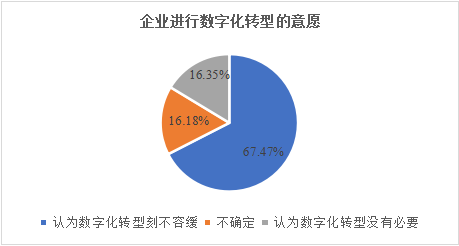
Figure 2 Willingness of Companies to Undergo Digital Transformation
Specifically, the willingness of companies to undergo digital transformation after the pandemic varies by size and nature. Our survey results show that 71.10% of large enterprises believe that digital transformation is urgent, while the proportions for small and medium-sized enterprises are 66.67% and 63.63%, respectively.
This indicates that large enterprises have a stronger willingness to undergo digital transformation after the pandemic, possibly because the benefits of digitalization are greater for large enterprises, as their internal and external operations require more “support” and “enhancement” from digitalization, thus motivating them more strongly to undergo transformation.
Additionally, the proportions of state-owned enterprises, private enterprises, and foreign-funded enterprises that consider digital transformation urgent are 69.68%, 67.13%, and 64.29%, respectively. This may be due to the relatively low degree of digitalization in state-owned enterprises prior to this, making them more acutely aware of the need for digital transformation during the pandemic.
Next, we also surveyed companies that had undergone or were undergoing digital transformation before and after the pandemic. The results showed that before the pandemic, 543 companies (accounting for 93.46% of the total) had undergone some degree of digital transformation; after the pandemic, 498 companies (accounting for 85.71%) underwent digital transformation.
This indicates that enterprises in China have engaged in digital transformation practices to varying degrees in recent years, reflecting their efforts in the fourth industrial revolution. It should also be noted that this longitudinal change in data (from 93.46% to 85.71%) does not indicate a “relaxation” of digital transformation among Chinese enterprises after the pandemic; rather, the decrease in the proportion of digital transformation after the pandemic is likely due to timing, as some companies may not have had the opportunity to start implementing digital transformation during our survey period.
From a static perspective, as shown in Figure 3, whether before or after the pandemic, the sales process consistently accounted for the highest proportion of digital transformation efforts (56.45% before the pandemic, 51.98% after), while the logistics process consistently accounted for the lowest proportion (14.11% before, 14.63% after).
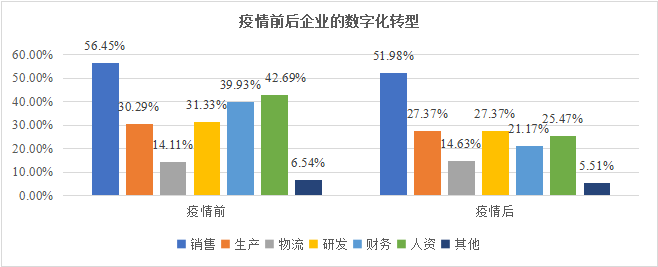
Figure 3 Digital Transformation of Enterprises Before and After the Pandemic
This result aligns with reality: In practice, consumers, as one of the most important stakeholders for enterprises, prompt companies to pay special attention to meeting consumer demands and improving consumer experiences, such as establishing e-commerce platforms and engaging with customers online.
The logistics process includes both external and internal logistics, with external logistics primarily covering supply and sales logistics outside the enterprise; internal logistics mainly involves production logistics and supply and sales logistics within the enterprise. The degree of digitalization in external logistics may be higher (due to the interconnectedness of the broader environment driving the digitalization of logistics between enterprises), but internal logistics is often overlooked by enterprises. In cases where funding is not particularly abundant, enterprises often do not prioritize achieving internal logistics digitalization.
From a dynamic perspective, as shown in Figure 3, compared to the situation before the pandemic, only the proportions of digital transformation in finance and human resources have significantly decreased (the digital transformation proportion in finance dropped from 39.93% to 21.17%, and in human resources from 42.69% to 25.47%), while the proportions in other areas have not changed significantly.
The significant decrease in digital transformation proportions in finance and human resources is mainly because the digital transformation processes in these two areas are relatively easy and standardized. For example, the finance area uses electronic accounting systems, while the human resources area integrates personnel information in databases. Thus, the digitalization levels of these two areas are relatively mature, leaving less room for further transformation.
As a result, after the pandemic, the focus of digital transformation for enterprises has shifted from internal to external aspects, allowing companies to allocate more resources saved from finance and human resources to the digital transformation of external operations, such as building electronic sales platforms and collaborating with upstream and downstream enterprises to establish logistics information platforms.
More specifically, different sizes and types of enterprises have different focuses in their digital transformation practices before and after the pandemic. First, as shown in Figures 4 and 5, whether before or after the pandemic, large enterprises consistently have higher proportions of digital transformation across all processes compared to medium and small enterprises. This indicates that large enterprises have richer practices in digital transformation before and after the pandemic, covering more processes and possessing more comprehensive transformation experience.
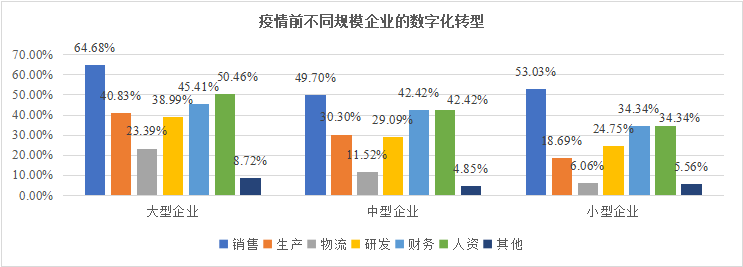
Figure 4 Digital Transformation of Different Sizes of Enterprises Before the Pandemic
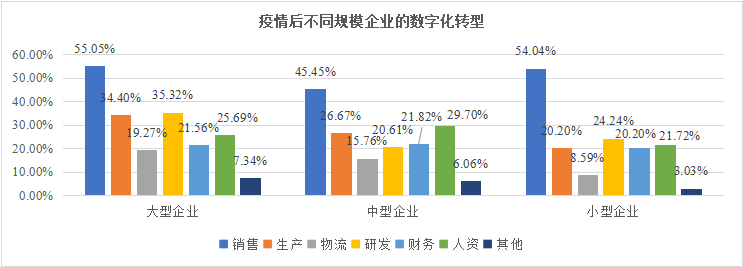
Figure 5 Digital Transformation of Different Sizes of Enterprises After the Pandemic
Secondly, different types of enterprises have different specific practices in digital transformation before and after the pandemic. For instance, as shown in Figures 6 and 7, before the pandemic, the proportion of digital transformation in the sales process for private enterprises (61.25%) was significantly higher than that for state-owned enterprises (53.19%) and foreign-funded enterprises (57.14%). This may be because sales are significantly more critical for private enterprises than for state-owned enterprises.
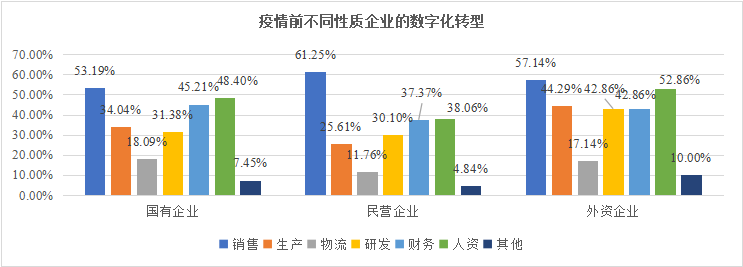
Figure 6 Digital Transformation of Different Types of Enterprises Before the Pandemic
However, after the pandemic, foreign-funded enterprises had the highest proportion of digital transformation in the sales process (61.43%), as the complexities of decision-making and operations in the sales process for foreign-funded enterprises during the pandemic led them to place greater emphasis on digital transformation in this area afterward.
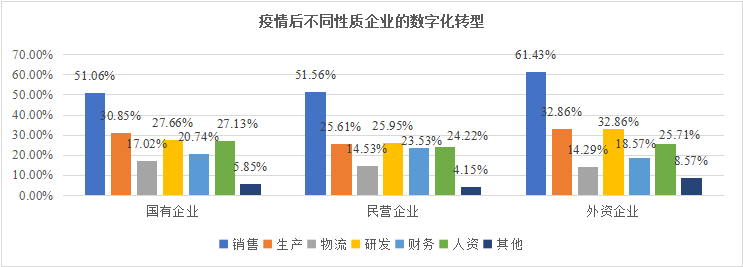
Figure 7 Digital Transformation of Different Types of Enterprises After the Pandemic
Moreover, both before and after the pandemic, state-owned enterprises had a higher proportion of digital transformation in the logistics process compared to private and foreign-funded enterprises, indicating that state-owned enterprises have invested more effort in logistics. Additionally, the proportion of digital transformation in the research and development process for foreign-funded enterprises has consistently been higher than that for state-owned and private enterprises before and after the pandemic. This may be due to the stronger advantages of foreign-funded enterprises in integrating domestic and foreign R&D activities and technologies, leading to deeper digital transformation in the R&D process.
5. Conclusion and Insights
This article is based on the “silver bullet” theory in the field of strategic transformation. It reviews the development history and main content of digital transformation and conducts a questionnaire survey on corporate digital transformation during the pandemic. The main conclusions and insights are as follows:
(1) Most enterprises in China have recognized the importance of digital transformation after the pandemic, understanding its unique and crucial role in facilitating corporate development. However, nearly one-third of enterprises remain hesitant about digital transformation. Therefore, overall, Chinese enterprises should enhance their awareness of this “silver bullet” of digital transformation, allowing it to permeate all aspects of their operations.
(2) Whether before or after the pandemic, the sales process consistently accounted for the highest proportion of digital transformation efforts, while the logistics process accounted for the lowest. The necessity and importance of digital transformation in the sales process are undeniable; however, enterprises should not neglect the digital transformation of the logistics process, especially internal logistics.
Internal logistics is both the lifeblood of enterprise production activities and a prerequisite for external logistics. Improving the digitalization level of internal logistics not only helps reduce production and operation costs but also improves the accuracy of inventory information. Therefore, enterprises should pay attention to the digital transformation of their logistics processes in the future, striving to enhance the digitalization level of logistics.

(3) Compared to the situation before the pandemic, only the proportions of digital transformation in finance and human resources have significantly decreased, while the proportions in other areas have not changed significantly. This indicates that the focus of digital transformation for enterprises is gradually shifting from internal to external aspects.
“From inside out” is a normal trend in the development of digital transformation because internal digital transformation is usually easier to implement and control, and the transformation process is relatively simple, requiring fewer subsequent adjustments. However, focusing more energy on the digital transformation of external operations does not mean that internal digitalization efforts can be neglected; enterprises should continue to monitor the digital dynamics in finance, human resources, and other internal processes to keep pace with the times.
(4) Digital transformation is not merely an “individual battle” for enterprises; it should be a direction for collective efforts from all sectors of society, as successful corporate digital transformation benefits the advancement of society as a whole and the improvement of living standards for its members.
First, enterprises should enhance R&D investment, fully utilize ABCD technologies, and actively promote digital transformation in all their processes; on the existing basis of “Internet +” transformation, further expand in the digitalization process, catering to the current trend of online consumerism—business empires at our fingertips. They also need to leverage big data to drive and reshape the entire value chain, exploring and making necessary adjustments to “Internet +” transformation opportunities across various nodes including R&D, procurement, production, logistics, sales, and branding.

Secondly, social members, as employees and consumers of enterprises, should adjust their mindsets, actively engage in digital life, and provide feedback for improvements in corporate digital transformation;
Moreover, the government, as a market regulator and rule-maker, should support enterprises in their digital transformation efforts. Government departments and state-owned enterprises should also accelerate their own digital transformation, leading by example; finally, international parties should strengthen technological cooperation and information sharing to jointly promote the digital transformation of enterprises worldwide.

(5) Whether before or after the pandemic, large enterprises have more comprehensive practices in digital transformation and a wider scope of transformation. The proportion of large enterprises supporting digital transformation after the pandemic is also the highest. Therefore, smaller enterprises should also strive to improve their digital levels by learning from large enterprises.
Additionally, the consistently higher proportion of digital transformation in the research and development process for foreign-funded enterprises compared to state-owned and private enterprises before and after the pandemic suggests that state-owned and private enterprises should focus on digital transformation in R&D to enhance efficiency, strengthen competitiveness, and support long-term development.
Author Introduction
Deng Xinming, Professor at the School of Economics and Management, Wuhan University, Doctoral Supervisor, Research Areas: Dynamic Competition, Non-Market Strategy, and Business Ethics.
Qiu Wenyun, Master of Business Management at Wuhan University, Research Areas: Strategic Management, Dynamic Competition.
Acknowledgment: This article is supported by the “Keli Management • COVID-19 Series” research project (Funding No: Klgl20206); thanks to research assistants Li Shiyan, Liu Liang, and Gao Yan for their help with questionnaire distribution, data collection, and processing.
Editor | Eighteen-Year-Old Middle-Aged Woman
Typesetting | Liu Yunfei

●Previous Recommendations ●
● The Dark Side of Creativity: Colleagues’ Jealousy and Rejection of Employee Creativity
● The Service Industry Also Calls for Craftsmanship Spirit
● Compliance Model: A New System for Evaluating State-Owned Enterprise Performance
● “Digitalization” Penetrates Customer Value Space

